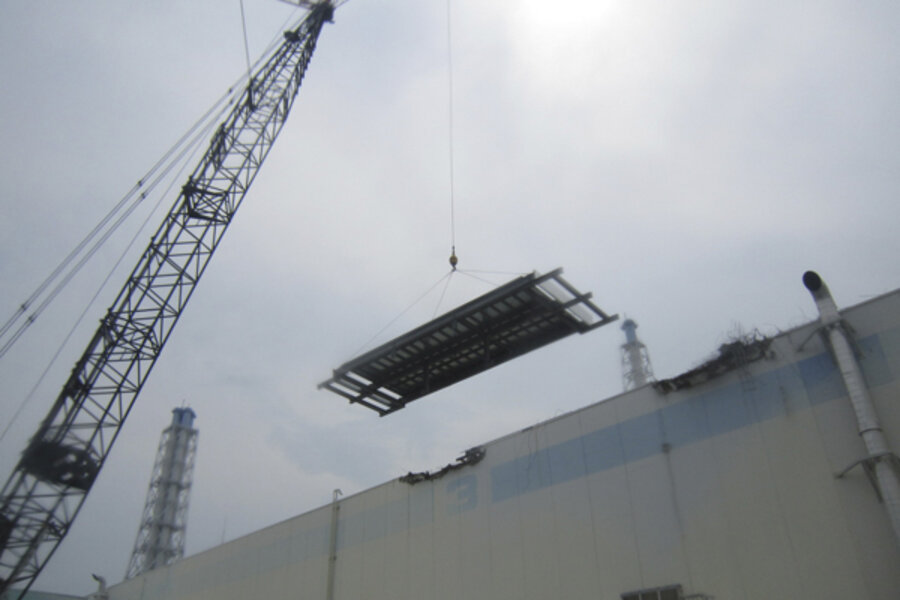Japan's nuclear crisis: Fukushima plant stability in sight?
Loading...
| Tokyo
Even as Japan's embattled prime minister urged Japan to phase out nuclear power, engineers at the crippled Fukushima Daiichi nuclear power plant had reason for cautious optimism.
The crippled reactors, three of which went into partial meltdowns, are stable more than four months after the devastating earthquake and subsequent tsunami rocked the north, says the government and plant operator. Now the reactors appear to be on track for a cold shutdown.
Reactor No. 3
Days after Japan's government announced it would conduct "stress tests" at all of the country's atomic facilities, the plant's operator, Tokyo Electric Power (Tepco), said it would start injecting nitrogen into the No. 3 reactor – one of three that suffered meltdowns in the aftermath of the March 11 earthquake and tsunami.
That unit was the only one of the three stricken reactors that hadn't received injections of the inert gas, which lowers hydrogen levels inside the units and prevents the kind of explosions that rocked the facility four months ago.
Tepco had said that treating the reactors with nitrogen was critical to its broader aim of stabilizing them by mid-July. But the injections carry the risk of causing further radiation leaks from the reactor's containment vessel. Japan's nuclear safety agency said any leaks would not be big enough to hurt the surrounding environment.
Workers have also finally begun circulating water around the three most troublesome reactors in order to cool the melted fuel rods inside.
Next steps and more hurdles
In April, Tepco announced a self-imposed deadline of January 2012 to bring all six Fukushima reactors to a safe state known as cold shutdown. But a series of technical setbacks, notably solving the problem of how to contain and treat an estimated 120,000 tons of radioactive water, has cast doubt on the firm's ability to meet that deadline. With the reactors stabilized, tentative optimism has returned.
The water treatment system has suffered leaks, and engineers have struggled to find a way to store the contaminated water. Much of it still sits in the basements of reactor buildings.
Construction of large steel radiation covers for three units is scheduled for October, according to Tepco.
Meanwhile, concern is rising for the health of the plant's 2,902 workers – all but 373 of them contract employees brought in from outside – who are battling not only radiation but also the arrival of an early-summer heat wave. Tepco says it has stepped up radiation monitoring and is opening more on-site rest areas and providing workers with coolant vests and refrigerant packs.
If the short-term prognosis for Fukushima has improved, Japan's leaders have conceded that the cleanup and decommissioning could take much longer than expected.





